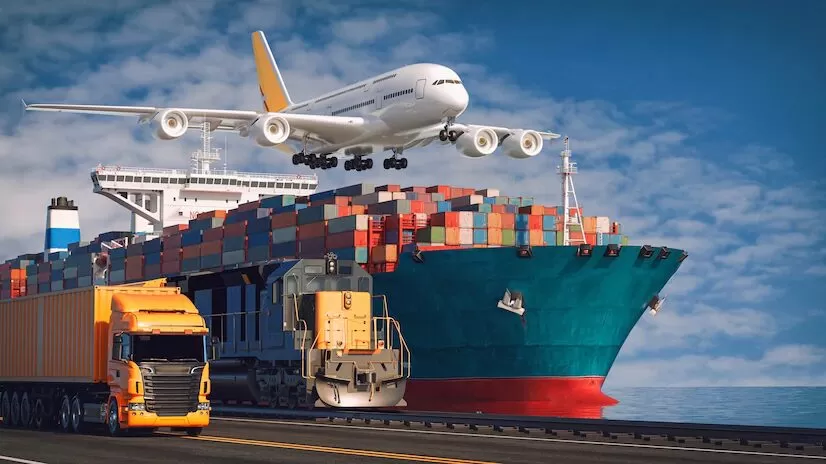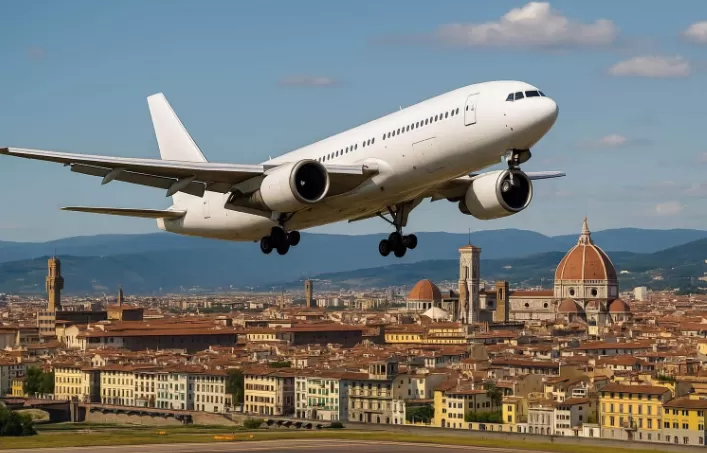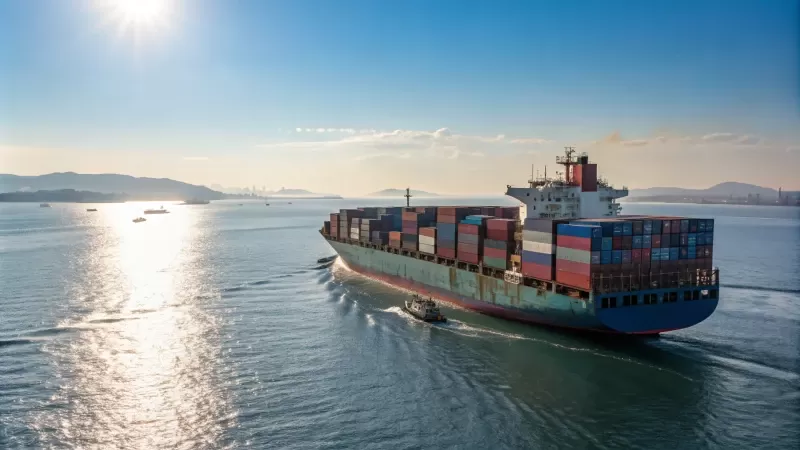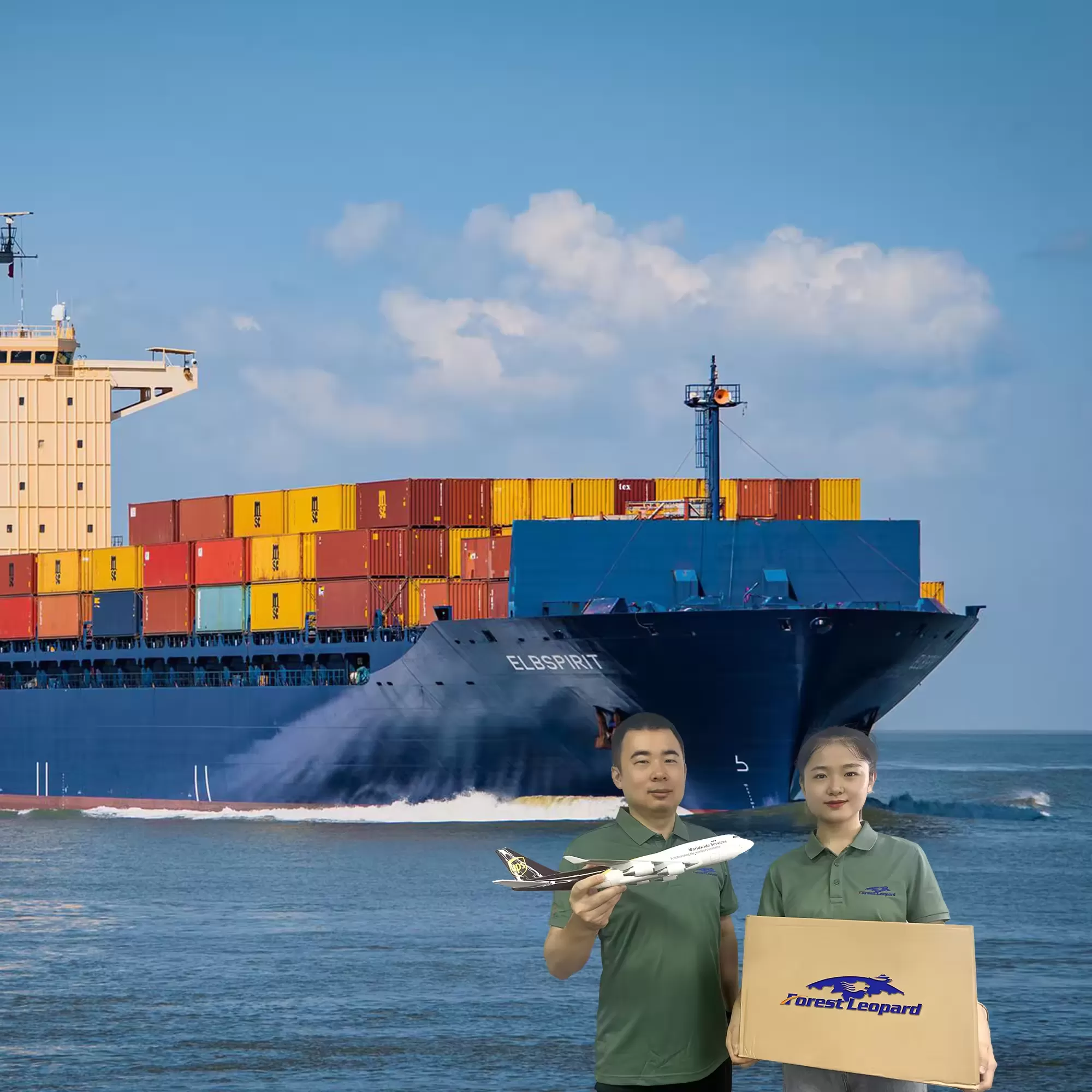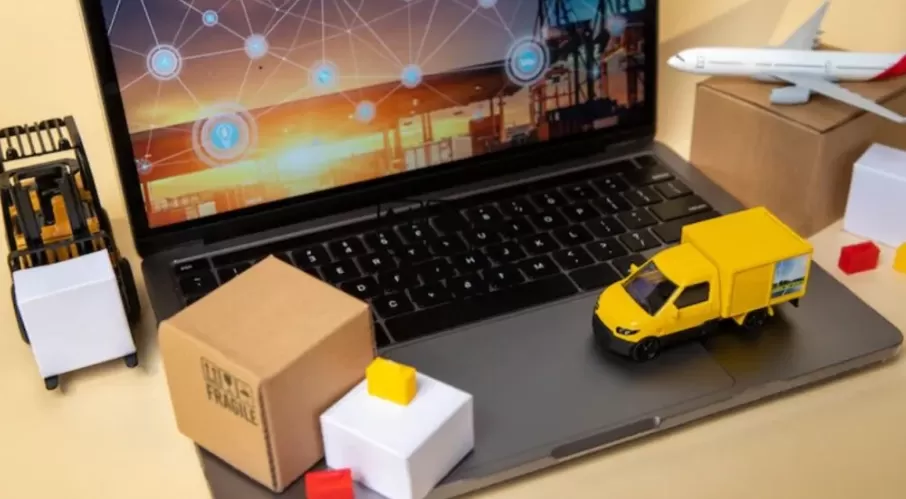Navigating the logistics of shipping from China to Italy can feel overwhelming. Between fluctuating rates, complex customs rules, and a maze of options like LCL, FDP, and DAP, getting a clear picture is tough.
This guide cuts through the noise. We provide actionable, detailed information you can use to make smarter, more cost-effective shipping decisions. Forget generic advice; this is the deep-dive you've been searching for, written by logistics professionals.
Are you ready?
Get real-time quotes for Italy
Get Quotes
Quick Comparison: Find Your Best Shipping Method
Your ideal shipping solution depends on three things: budget, timeline, and cargo volume. Answer these questions:
Is your shipment time-sensitive?
Yes (Under 10 days) -> Air Freight or Express Courier
No (Over 20 days is acceptable) -> Sea Freight or Rail Freight
What is the approximate size/weight of your shipment?
Under 100 kg -> Express Courier (DHL, UPS, FedEx)
100 kg - 2 CBM -> Air Freight is most efficient
2 - 15 CBM -> Sea Freight (LCL) is most cost-effective
Over 15 CBM -> Sea Freight (FCL) or Air Freight (if urgent)
Do you need hassle-free delivery to your door?
Yes, I want everything handled -> Look for DDP/DAP Door-to-Door services
No, I will handle customs and trucking myself -> Port-to-Port or Airport-to-Airport terms
Still unsure? Use the detailed breakdown below.
Overview of Shipping Options from China to Italy
The following table summarizes the costs, transit times, and key features of the main shipping options from major ports/airports in China to Italy to help you make the best decision.
| Method |
Service Details |
Estimated Cost |
Estimated Transit Time |
Key Features & Ideal Use Cases |
| Sea Freight |
FCL - 20' Container
Dest. Port: Genoa |
$2,650 / container |
20 - 30 days |
Most cost-effective. Ideal for bulk goods, non-urgent regular restocking. Best for destinations in Western and Northern Italy. |
| |
FCL - 40' Container
Dest. Port: Genoa |
$3,300 / container |
20 - 30 days |
Lower cost per unit. Perfect for large-volume, consolidated cargo. The preferred choice for large importers. |
| |
LCL - Per CBM
Dest. Port: Genoa |
Quote on request |
35 - 45 days |
Flexible, no minimum volume. Suitable for SMEs with less-than-container load (LCL) shipments. Note destination handling fees. |
| Air Freight |
Min. Weight: ≥1,000 kg
Destination: Nationwide |
$3.50 / kg |
4 - 7 days |
Fastest, highly predictable. Best for high-value, urgent, time-sensitive goods (e.g., electronics, fashion items). |
| Rail Freight |
FCL - 40'HQ Container
Destination: Milan |
$8,450 / container |
18 - 25 days |
Best value for money. Balances speed and cost. Ideal for time-sensitive goods to Northern Italian inland regions with a tighter budget than air. |
| |
LCL - Per CBM
Destination: Milan |
$230 / CBM |
18 - 25 days |
Excellent for small-to-medium volumes. Offers the reliability of rail with the flexibility of LCL. Ideal for cargo headed to Milan logistics hubs. |
freight forwarding
Get real-time quotes for Italy
Get Quotes
Important Notes & Disclaimer:
Price fluctuations: The above exchange rates are for reference in 2025 (USD).Freight prices change dynamically based on fuel surcharges, seasonal demand, and lane capacity. Please request a live quote at the time of booking.
All-In Quotes: Note that air rates typically exclude fuel, security, and handling fees. Sea and rail quotes may not include destination charges, customs clearance, or final trucking (for door-to-door service). Always request an all-inclusive quote to avoid hidden costs.
Transit Times: displayed are estimates from port/port or airport/airport and do not include origin/destination customs clearance, inspection, or holiday delays. Sea LCL times are longer due to consolidation/deconsolidation.
Planning Advice: Regardless of the method, booking early and securing inland transport (rail/trucking) in the destination country in advance is key to ensuring a predictable total delivery time.
Air Freight from China to Italy: The Speed Solution
Air freight is the backbone of urgent, time-sensitive supply chains. It's not just about speed; it's about predictability and reducing lead times dramatically.
How It Works: The Process
The journey isn't always direct. Your cargo is typically consolidated at a major hub like Shanghai Pudong (PVG) or Shenzhen Bao'an (SZX). From there, it flies on a passenger flight bellyhold or a dedicated cargo freighter. Key European hubs like Frankfurt (FRA) or Amsterdam (AMS) often serve as transit points before a final connection to Milan Malpensa (MXP) or Rome Fiumicino (FCO).
Key Advantages: Why Choose Air?
Unmatched Speed: The obvious benefit. You can move goods from factory to warehouse in under a week.
Enhanced Security: Goods are handled significantly fewer times than ocean freight, reducing the risk of damage, loss, and theft.
Superior Reliability: Airlines publish strict schedules. While weather can cause delays, it's far more predictable than ocean transit, which is susceptible to port congestion, storms, and geopolitical issues.
Lower Insurance Premiums: The shorter transit time generally translates to a slightly lower insurance cost.
Real-World Cost Example:
Route: Shanghai (PVG) to Milan (MXP)
Cargo: 500 kg of electronics, volume 2.2 CBM
Breakdown: Air Freight Rate: $3.50/kg → $2,100 + Fuel Surcharge: $300 + Security: $50 + Handling Fee: $100
Estimated Total Freight Cost: ~$2,550 (EXW or FOB terms. Does not include import customs clearance in Italy).
Who is Air Freight For?
Ideal for businesses importing high-value electronics, fashion items, spare parts, or any product where inventory turnover is critical and justifies the higher transport cost.
Sea Freight from China to Italy: The Cost-Effective Choice
For non-urgent, high-volume cargo, sea freight is unbeatable. Understanding the routes and options is key to maximizing its value.
Main Shipping Routes & Port Pairs
Virtually all container traffic from China to Italy transits the Suez Canal. The main ocean carriers on this route include MSC, Maersk, CMA CGM, and COSCO.
Primary Chinese Ports:
Ningbo-Zhoushan: One of the world's busiest ports, a powerhouse for exports.
Shanghai: Another mega-port with extensive global connections.
Shenzhen (Yantian/Shekou): The primary port for Southern China's manufacturing hub.
Primary Italian Ports:
Genoa (Genova): The largest Italian port, perfectly positioned for Northern Italy's industrial heartland (Milan, Turin).
La Spezia: A rapidly growing container port competing with Genoa, excellent for North Italian destinations.
Naples (Napoli): The main hub for central and southern Italy.
Key Advantages: Why Choose Sea?
Ultra-Low Cost: The single biggest advantage. The cost per unit or per kg is the most competitive of all methods.
Massive Capacity: You can ship virtually anything—heavy machinery, large vehicles, bulky furniture—without the strict size and weight restrictions of air cargo.
Environmental Efficiency: Container ships emit far less CO2 per ton of cargo transported per kilometer than aircraft.
freight forwarding
Get real-time quotes for Italy
Get Quotes
Sea Freight Options: LCL vs. FCL
This is a critical decision.
LCL (Less than Container Load): Your goods share a container with other shippers' cargo. You pay for the volume you use (per CBM). Perfect for shipments not large enough to justify a full container.
FCL (Full Container Load): You rent an entire 20' or 40' container for your exclusive use. This is more secure and often faster at the destination port as your container doesn't need to be unpacked at a warehouse. Cost-effective for volumes over 15 CBM.
Last-Mile Delivery: What Happens After the Port or Airport?
This is where many shippers get confused. The final leg of the journey is just as important as the ocean or air transit.
Port-to-Port (PTP) / Airport-to-Airport (ATA)
What it is: We handle the main carriage from port/airport to port/airport only.
Your responsibility: You (or your agent) are responsible for the origin haulage (factory to port), export customs clearance, import customs clearance at destination, destination haulage (port to warehouse), and all associated duties and taxes.
Who it's for: Large importers with their own in-house logistics teams or trusted customs brokers in Italy.
Door-to-Door (Typically under DAP or DDP Incoterms)
What it is: We handle the entire process. This includes collection from your supplier's factory in China, export customs, main carriage, import customs clearance in Italy, payment of duties/taxes (on DDP terms), and final delivery to your door.
Who it's for: This is the preferred option for most SMEs and e-commerce sellers. It provides a single point of contact, simplifies the process, and eliminates the need for you to coordinate with multiple parties abroad.
Breaking Down the "Sea" Options:
Sea Freight + Truck (Hǎi Kǎ): Your FCL container is delivered by sea to the Italian port. Upon clearance, the entire container is loaded onto a truck and driven directly to your specified address. This is efficient for full-container deliveries to a single location.
Sea Freight + Courier ( Hǎi Pài): This is the gold standard for Amazon FBA sellers and LCL shippers. Your LCL shipment is consolidated and shipped to a European port (e.g., Rotterdam or Hamburg). After deconsolidation and import clearance, your palletized goods are handed to a local courier (like DHL, DPD, or GLS) for the final "last-mile" delivery to your warehouse or directly to the Amazon FBA warehouse (e.g., FCO1, MXP5). It combines the low cost of sea freight with the convenience of door delivery.
A Special Note for Amazon FBA Sellers
Shipping to Amazon FBA warehouses in Italy (like MXP5 near Milan or FCO1 near Rome) requires precision.
Why (Sea + Courier) is Your Secret Weapon
For small and medium buyers (small-to-medium buyers), this is the ultimate solution. You avoid the complexity and cost of arranging trucking yourself. The courier partner handles the appointment booking with Amazon and delivers your shipment according to Amazon's strict requirements. It's seamless and efficient.
Critical FBA Preparation:
FBA Labeling: Ensure every item has its correct FNSKU label. Mismatched labels are the primary reason for shipments being rejected at the Amazon receiving warehouse.
Carton Labels: Each box needs a unique FBA shipment label. Palletized goods require specific pallet labels.
Packing List: Provide a detailed packing list to your freight forwarder. This ensures they can prepare the commercial invoice accurately, which is vital for smooth EU customs clearance.
Pro Tip: Always opt for a freight forwarder experienced with Amazon shipments. They understand the specific routing requirements, labeling standards, and paperwork needed to prevent costly delays and storage fees.
Understanding All Costs: No Surprises
The freight quote is only part of the total cost. Here’s what else to factor in:
Origin Charges: Haulage, export customs clearance, documentation fee.
Main Carriage: The ocean or air freight rate.
Destination Charges: Import customs clearance, handling fees, port security fees.
Duties & Taxes:
Duty: Calculated as a percentage of the goods' value ( depends on the product's HS code).
VAT (IVA in Italy): 22% of the (CIF value + duty). This is a mandatory tax.
Insurance: Highly recommended. Usually around 0.3% of the goods' value for all-risk coverage.
Your Action Plan: Next Steps
Gather Your Details: Know your cargo's weight, dimensions, and HS code.
Define Your Needs: Decide on a preferred shipping method and Incoterm (DAP, DDP, etc.).
Get Quotes: Contact us with the information above. We will provide a detailed, all-inclusive quote with a clear breakdown of costs.
Review & Book: We handle the rest, from collection to delivery, keeping you informed at every step.
Ready to simplify your shipping? Click here to get your free, no-obligation quote today. Our experts are here to provide you with the most competitive and transparent pricing for your specific needs.
Amazon FBA
Get real-time quotes for Italy
Get Quotes
Frequently Asked Questions (FAQs)
1. What happens if my goods are damaged upon arrival in Italy?
Immediately document the damage with photos and notify the shipping line or airline within the stipulated timeframe (usually 3 days for sea freight, 14 days for air freight). Your freight forwarder should guide you through the claims process with the carrier. This is why declaring accurate value and purchasing all-risk insurance is non-negotiable for valuable cargo.
2. How do I handle customs if I don't have an EU EORI number?
You can't clear goods yourself without an EORI number. Your options are: 1) Appoint a customs broker in Italy who will use their EORI for the clearance process, or 2) Ship under Delivered Duty Paid (DDP) terms, where your freight forwarder handles everything using their EU entity's EORI. The second option is far simpler for first-time importers.
3. My shipment was delayed due to a strike at the port. Who is responsible?
Carriers typically classify this as a "force majeure" event, absolving them of liability for delays. Your contract is for transportation, not guaranteed arrival on a specific date. This is a core risk in logistics. While you can't claim compensation for the delay, a good forwarder will proactively reroute your cargo or provide clear updates.
4. Can I ship lithium batteries to Italy, and what are the rules?
Yes, but it's highly regulated. For air freight, lithium batteries are classified as Dangerous Goods (DG) and require special packaging, documentation, and labeling. Shipping them illegally or without proper declaration can lead to massive fines and the refusal of your entire shipment. You must work with a forwarder experienced in handling DG and provide the necessary MSDS and test reports.
5. What's the difference between a 'Free Time' and 'Demurrage'?
'Free Time' is the number of days you have to pick up your container from the port after it's discharged, free of charge. 'Demurrage' is the daily fee the port charges you for holding the container beyond that free time. These fees can add up quickly. Ensure your logistics plan includes prompt pickup and return of containers to avoid these costly charges.
6. Why does my freight forwarder need a detailed Commercial Invoice and Packing List?
This isn't bureaucracy; it's essential for two reasons. First, Italian customs uses it to assess the correct duties and taxes. Inaccurate descriptions or values can lead to inspections, delays, and fines. Second, for LCL shipments, it allows the warehouse to properly consolidate your goods with others, ensuring everything arrives together and is identifiable.
7. Is it better to use a Chinese forwarder or an Italian one?
There's no one-size-fits-all answer. A Chinese forwarder may have better rates and control from the origin. An Italian forwarder will have superior knowledge of local customs and final-mile trucking. The best solution is often a forwarder with a strong network and offices in both countries, ensuring seamless coordination from pickup to delivery.
8. What are the most common reasons for customs inspections in Italy, and how can I avoid them?
Inspections are often triggered by: inconsistent paperwork (value doesn't match the product type), incorrect HS codes, suspicious shipment origins, or random checks. To minimize risk, ensure your paperwork is flawless, use accurate and detailed product descriptions, and work with an experienced forwarder who can pre-check your documents.
9. Can I change the consignee or destination after the shipment has left China?
Yes, but it's complicated and expensive. This is known as an "Amendment of Bill of Lading" or "Re-consignment." The carrier will charge an amendment fee, and if the container is already in transit, you may also incur costs for changing the final routing. It's always best to confirm all details before the shipment sails.
10. What exactly does 'All-Risk' insurance cover, and is it worth it?
'All-Risk' insurance is the most comprehensive coverage, protecting against physical loss or damage from external causes during transit (e.g., sinking, collision, fire, theft, handling damage). It is absolutely worth it for any shipment where the value of the goods justifies the premium (typically 0.3-0.5% of the goods' value). The peace of mind is invaluable.
Explore Our Global Logistics Network
While this guide provides a comprehensive overview of shipping to Italy, your supply chain may span across continents. We have created detailed, actionable guides for other major logistics corridors:
United States: Comprehensive US shipping guide with FBA specifics
Canada: Ultimate guide to using a Canada FBA freight forwarder
European Markets: Best freight forwarders for European FBA
Key US Hubs: Detailed insights for New York, Los Angeles, and Chicago
Logistics Fundamentals: Understanding the Differences Between 1PL, 2PL, 3PL, and 4PL
Compare All Options
Each destination and logistics model offers unique advantages. Explore our library of guides to develop a holistic and cost-effective global supply chain strategy.

 EN
EN
 FR
FR
 ES
ES
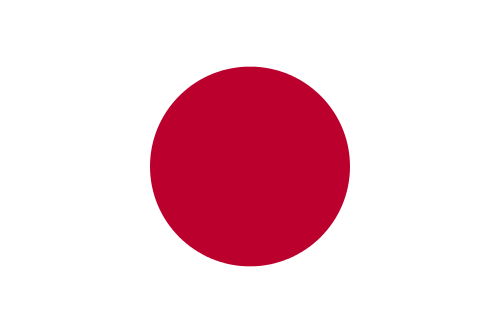 JA
JA
 PT
PT
 RU
RU
 AR
AR
